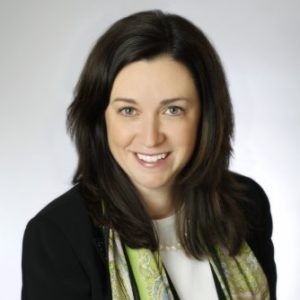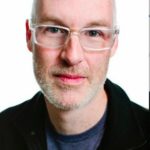Last Friday, I was in one of my “oh we’ve nailed it” gleeful moods as we contemplated a new business plan to focus on “agents of change.” Our logic was airtight, or so we thought. If we could just figure out how to isolate change agents as a personality type via a line of questioning, then we could narrow both the target and our communications approach. To see if we were on the right track, I called my oldest brother Rick who has studied Myers-Briggs personality types for years as a hobby, with the hope that he could help us with the identification process.
Doh! That’s when I was reminded yet again how wrong I can be. Of course, intuitive inventor-types like me gravitate towards new ideas BUT that doesn’t mean we’re the only ones who can drive change in an organization. In fact, traditionalists, may not want or seek out change but if shown factual reasons why change is required, they can be especially effective at making change happen in regulated industries like banks or insurance companies.
Which brings me to my interview with Melinda Welsh, CMO of Chase Auto Finance. Although I can’t categorize Melinda into a particular Myers-Briggs quadrant, I can tell you she is very much an agent of change, an approach that garnered her much success at Chase transforming marketing into a profit center and along with that, The CMO Club‘s President’s Circle Award. Read on for details on Melinda’s efforts and stay tuned in the event my brother passes along more humbling insights with his soon to be earned Myers-Briggs certification!
Drew: Tell me about Chase Auto Finance.
Melinda: Sure. A lot of people don’t connect a bank with a car; we certainly do and think that consumers should be thinking about their auto purchase a little differently than they are today – just to make sure they’re getting the best rate and the best kind of loans for their personal situation. It’s really important for us. Today, most auto purchases and financing are happening in the dealer. And we have a huge dealership network; it’s part of what we do. We support a lot of our sales staff in our B2B space;. That’s a really huge, important part of our business. We also recognize that when a consumer sits down in a dealership, they may not be fully aware of what their finance options are and they’re thinking just about their payment. But do they really know what their rate is and are they really educated before they walk in the door?
Drew: But that’s not always the case, right?
Melinda: Exactly, which is why they need talk to their financial institution about it and do their research. We’ve just launched our new end-to-end car buying and financing site, Chase Auto Direct.It helps our customers with finding the car, purchasing, and completing the financing before getting to the dealer. This end-to-end digital car buying experience is pretty progressive – it’s not for everyone, but we believe we should be giving our customers options, particularly those who are comfortable with all-digital experiences.
Drew: How is it going so far?
Melinda: We’re learning a lot, and it’s been really a fascinating ride in terms of marketing. It’s been primarily picked up as a fintech story, which we weren’t expecting. So we are switching gears a bit and thinking about a fintech marketing approach.
Drew: Is there another side of your auto business?
Melinda: Yes. We work with manufacturers including Mazda, Subaru, Jaguar, Land Rover, and Maserati as their private label financing partners. From a marketing perspective, we work really closely with all these manufacturers on co-marketing that helps their brands, which is good for our business as well. So that’s been a really interesting combination of B2B and B2C marketing.
Drew: The role of CMO seems to vary greatly depending on the company and the individual. Some control the customer experience and marketing, others new product development. How much does your role encompass?
Melinda: It’s an interesting discussion around here about if any one department owns the end-to-end customer experience and the answer is no. Today, it’s not as cohesive as it should be and it’s something that we are really working on. We’re developing our roadmap for next year and offering a more consistent end-to-end experience is definitely an opportunity. I see more and more of that coming into marketing, and a more holistic ownership of that customer experience and customer lifecycle.
Drew: What about product development?
Melinda: At Chase product development typically sits in lines of business, which are all my internal clients. Marketing always has a seat at the table for how we would talk to a customer about this new product. This is so important because it really helps, inform what the product ended up being. So I don’t see that moving into marketing, but we’re definitely a critical piece of it.
Drew: What would you consider your proudest accomplishment so far?
Melinda: When I got into this job I had a fantastic CEO who really wanted transformative marketing. She said , “I want you to come here to change things.” When I arrived it was an old-fashioned cost center marketing group, Our shared vision was to change marketing into a profit center, to move it from B2B sales support to B2C, and to be a really big important part of what the Auto executive team is interested in.
Drew: That must have been a big challenge, right?
Melinda: Yes. We had to figure out the types of functions we needed and build a group out. We needed to assess how we’re going to invest in digital and how we’re going to transform things like events, which are still important to our business. And figure out how we’re going to use CRM and connect with our customers. We really took everything to the next level in a relatively short period of time, which is what I was brought into do. I feel like there’s still a lot more to do, but that’s what I’m proud of in this role.
Drew: That’s great. So you came in as a change agent and you succeeded at changing things. What part of this was measurable?
Melinda: The new digital portal is easier to measure than some of our other programs. We can measure that because we are doing a lot of direct marketing tactics to drive people there, and we track what happens. We know for every dollar spent what is needed to get a return, It’s actually quite measurable in that way.
Drew: There must be some other metrics that are tougher to gauge given longer purchase cycles?
Melinda: I think there are especially since we work a lot of the luxury automobile segments. People don’t buy those every day, and they might think about it for a long time before they buy it. So we measure engagement, exposure, and leads in those cases.
Drew: I would imagine that measuring sales and profit would be really important in your role?
Melinda: Of course! We’re a bank and we’re dollars and cents oriented. So that’s the most important way we measure things, honestly. But there is another internal measure that I use which has to do with my colleagues who run businesses. Do they trust marketing? Do they want to invest more funds and in more marketers because they see the value that marketing is adding? If the answer is yes, and they see it as a critical piece of growing their business, then I feel like we’re really succeeding as a marketing organization.
Drew: The overall Chase brand must also be a big help.
Melinda: I think that the strength of the overall Chase brand helps us a lot. One reason I’m extremely lucky to be here is that we don’t have to encourage people to come to our Chase assets. Millions of people come into our branches and visit our website every day. It’s where they do all of their financial activities. So if we put our messages on Chase.com or in the branch, people read them. And, when they get to our website, they expect something really high quality. So we’re careful about what we put out across all of our businesses. We hope that what they find is something that’s very, very valuable because it has that Chase brand behind it,.
Drew: Do you have any recommendations for your fellow CMO’s to consider trying in 2017?
Melinda: Make sure that you’re still looking at non-digital marketing channels. I know it’s starting to become a buzzword again, but experiential marketing is well worth revisiting. And while some people are doing it well, a lot of people aren’t or they are not sure what to do to scale experiences. People really want something tangible and marketing can provide that. .
Drew: Love that. Renegade’s experiential program for HSBC (the BankCab) ran for 13 years and was actually cost effective. What else would you recommend?
Melinda: I think there’s something really interesting happening with video content within a platform like Facebook. I think advertisers haven’t really caught on to yet to the idea of creating “snackable” content. And it’s not about placing ads, it’s about really delivering content that people are going to be interested in a much different way than what we’ve been talking about for the past couple years.
Drew: Any other recommendations?
Melinda: I would say don’t just fall back on what’s worked before and really think about the next generation. My kids aren’t millennials but take my 11-year old daughter as an example, she does not watch TV! But she’s absolutely glued to video content on her phone, and what she finds interesting and relevant is very, very different than what we’re used to. So don’t ignore the signals and rely on what you’ve done before because there’s a whole new world of marketing and advertising that’s waiting to be tapped that we haven’t figured out quite yet.


